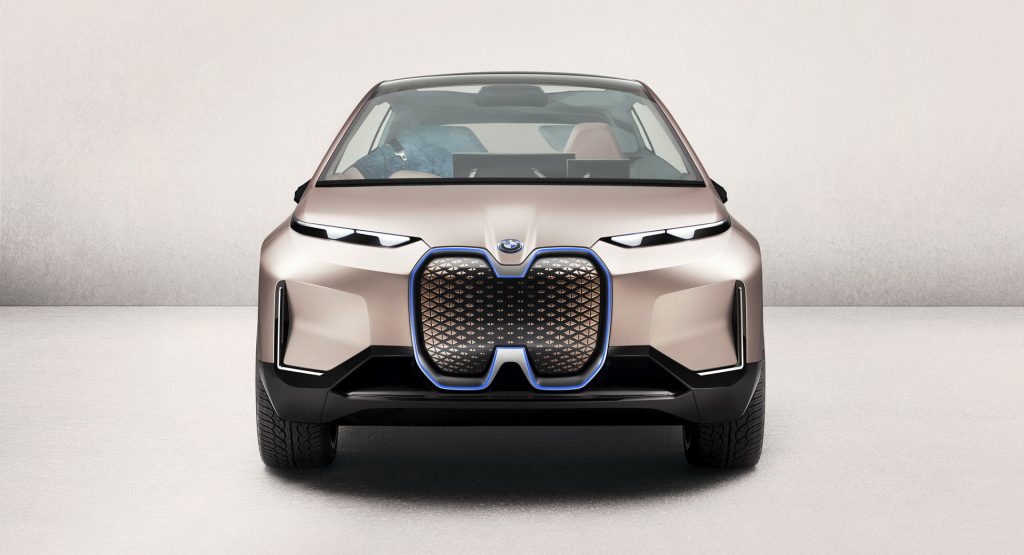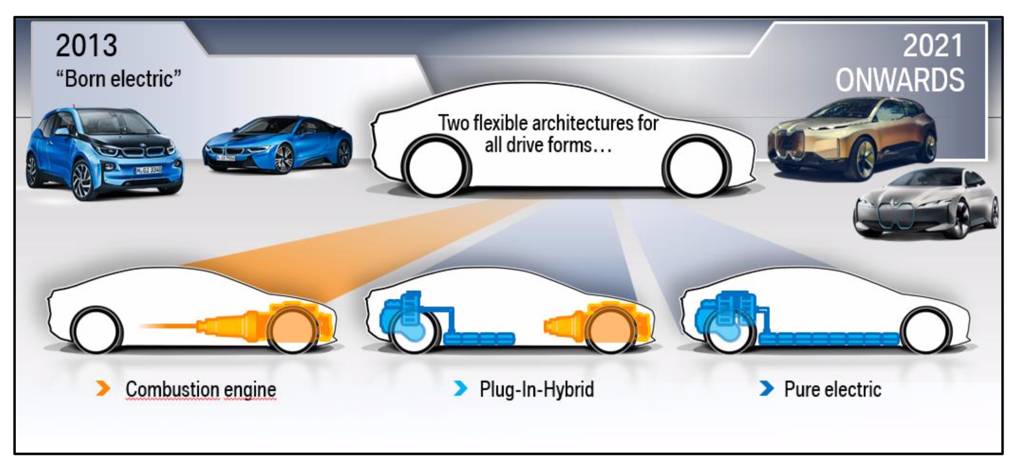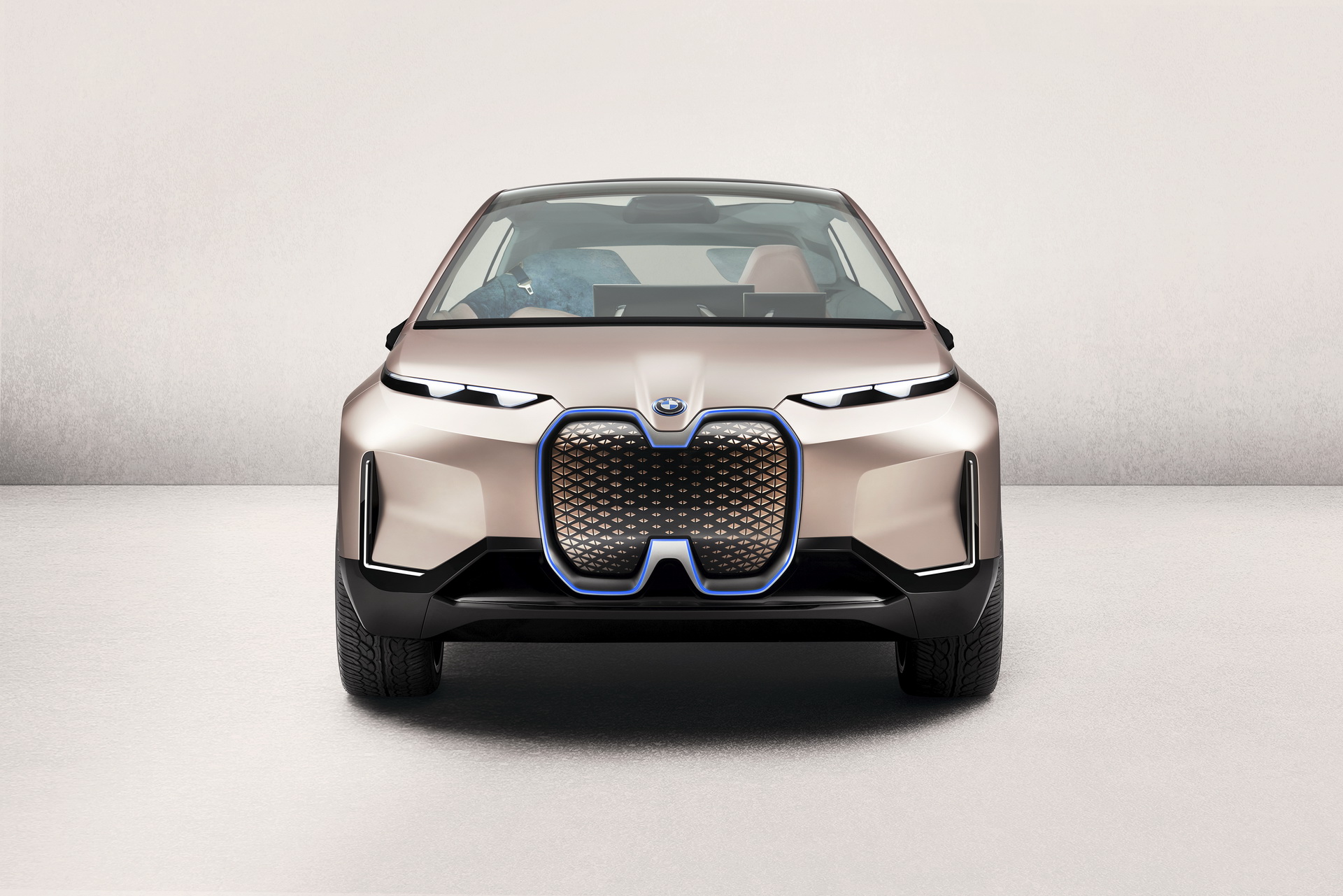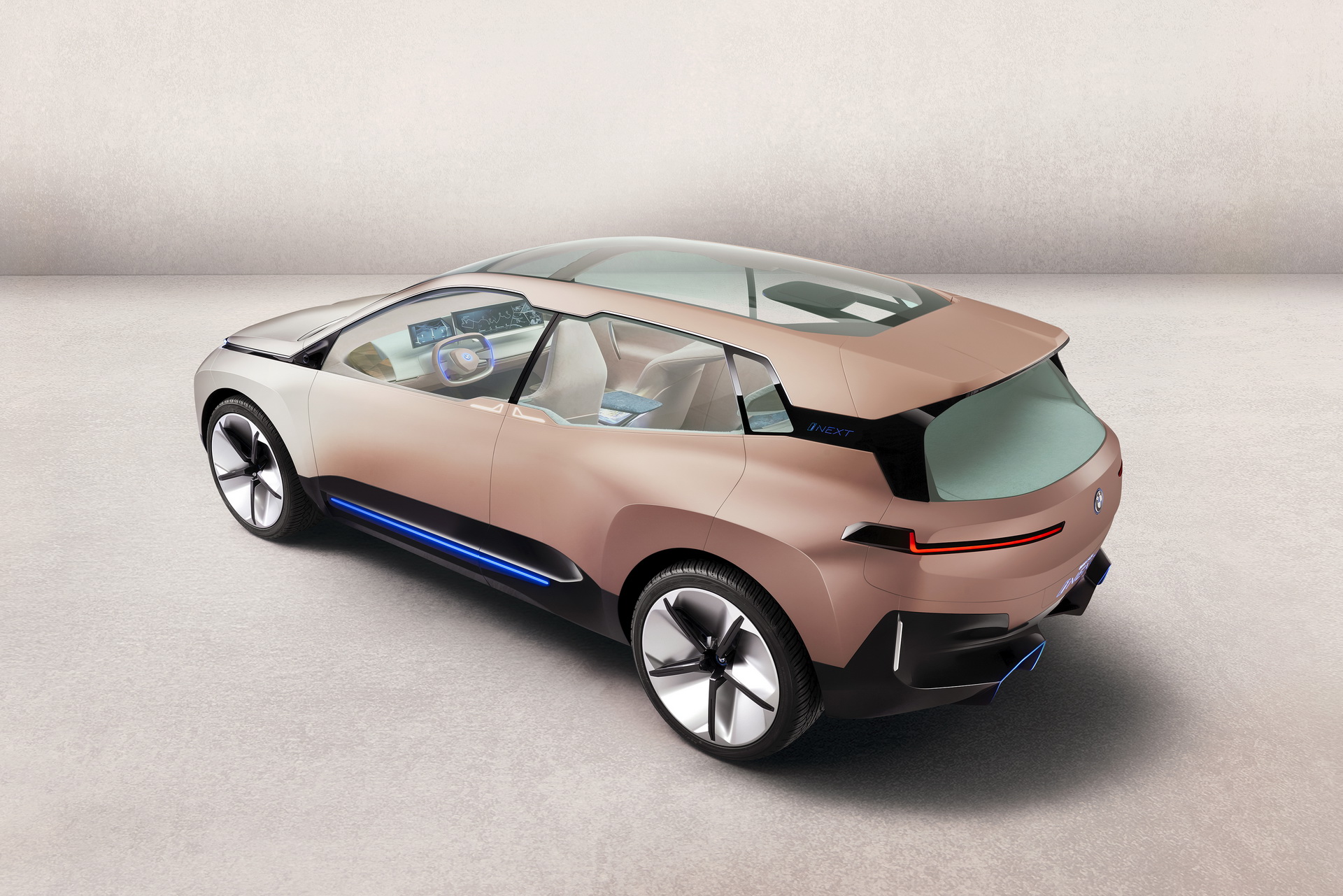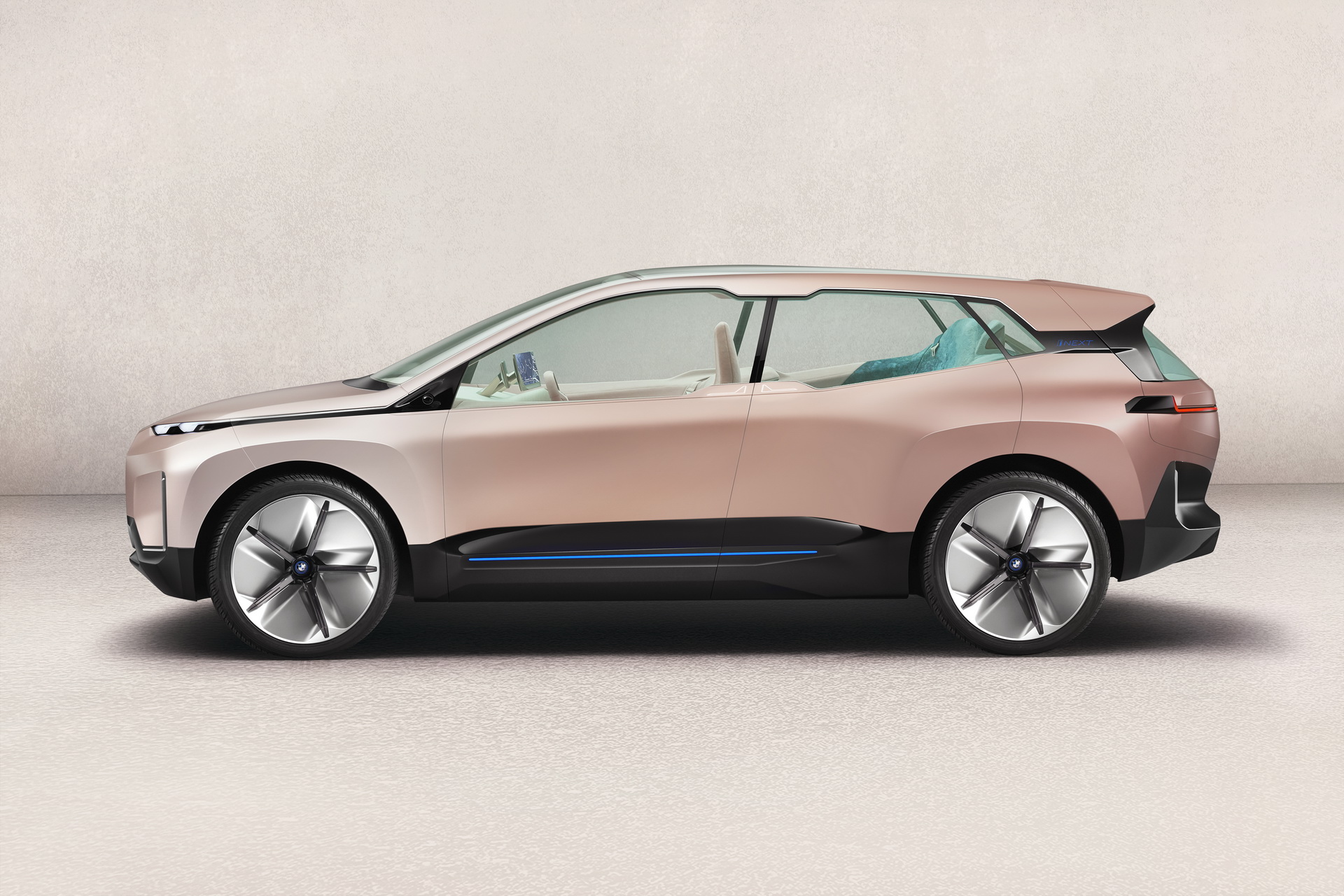The main attraction at BMW‘s LA Auto Show was the Vision iNext concept – and rightly so, as it was revealed for the first time in the U.S.
At the EVs presentation, thought, BMW vice president of electric powertrain development, Stefan Juraschek, also revealed a bespoke, all-new architecture developed by the carmaker that can be used by combustion engine vehicles, plug-in hybrids, and pure electric vehicles and allows them to be built on the same production line.
This new platform will underpin the production version of the iNext, expected to launch in 2021 as a luxurious, all-electric SUV. The genius of the new platform lies in its flexibility, created by BMW’s ability to combine an electric motor with the gearbox and power electronics into a single unit. For use in an EV, this package simply needs to be placed at the rear of the vehicle. For a hybrid, an internal combustion engine can be slotted in up front and if BMW wants a pure-ICE, it just ditches the battery and electric unit.
Wired rightfully notes that this flexible architecture will provide BMW with the perfect solution no matter where the industry goes in the coming years. If internal combustion engines stick around longer than some expect, BMW has the answer. If hybrids boom in popularity, BMW has the answer. If EVs do indeed prove to be the future, they is perfectly poised to build them en masse at the drop of a hat.
Powertrain flexibility isn’t the only thing this new platform has going for it. When in use with the iNext, it will be able to support a battery pack large enough to provide a range of 435 miles (700 km). Additionally, it will be ready to support Level 4 and Level 5 autonomy when its permitted for public use.



